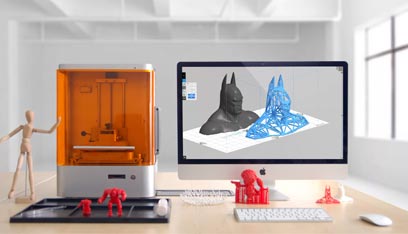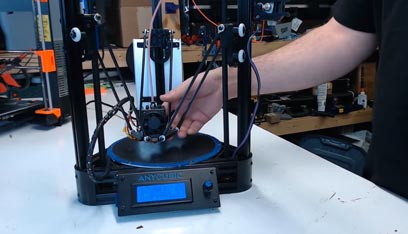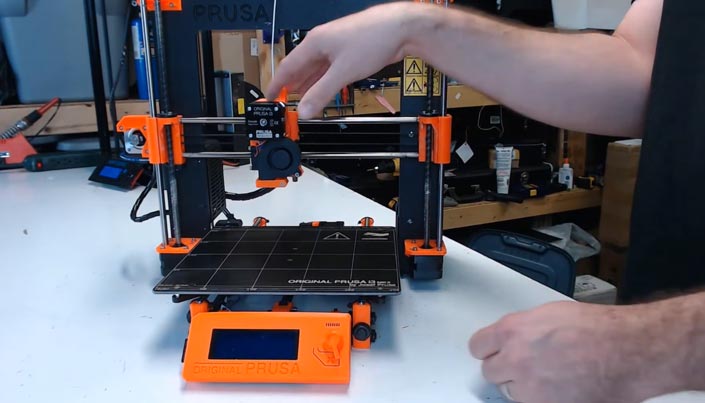If you’ve been thinking of buying a 3D printer, but haven’t gotten around to it yet, there are plenty of resources out there to help you get started. While it’s easy to find YouTube videos and forums, there is a learning curve. If you’re considering buying a 3D printer for the first time, consider the community’s open source designs. Thingiverse, a staple of the 3D printing community, offers countless open source designs. But just because they’re free, don’t assume you’ll be able to find a design you’ll like. While some people have success printing perfect designs, some people have trouble getting started, and end up throwing away the printed object.
3D printing is an outgrowth of traditional printing

The process of 3D printing involves layer-by-layer fabrication of three-dimensional physical models. Unlike traditional printing, 3D printing uses polymer filaments rather than ink. In addition to polymer, 3D printers can also produce objects made from metals, ceramics, and glass. The process of 3D printing grew out of the CAD industry, which was rapidly advancing and incorporating new techniques. In the past, 3D models were made by using wire frames or surfaces. The process involves carefully controlling the thickness of multiple layers of material.
In the medical field, 3D printing is already improving healthcare by lowering the cost and creating customised solutions for healthcare providers. It is used to create bespoke tools and moulds, and has already helped improve the quality and durability of prosthetics. In fact, GE Additive alone has produced more than ten thousand hip replacements using this technology. In addition to producing tools and medical supplies, 3D printing has the potential to revolutionize the manufacturing industry, Click over here now.
It is cheaper than expensive
Some people might think that 3D printing is expensive but this isn’t the case. A decent 3D printer can be purchased for about $500. After you pay for the printer, you’ll need to buy the filament and resin. Each spool of filament can cost between $30 and $100, but you can often buy them at lower prices. If you have a lot of designs, you can even print your own models for much cheaper.
Filament costs vary a lot from brand to brand. It’s not necessarily cheaper, but the price difference may contribute to the quality of the end product. For example, a filament that costs EUR10 per kilogram could cost up to EUR40 per spool. In this case, it’s better to focus on the quality of the part itself rather than the price of the filament. However, if you’re not sure how much filament you’ll need, you can always get a free 3D printer software.
It is ideal for short-run manufacturing
The benefits of 3D Printing are numerous. Its ability to produce parts and assemblies quickly and efficiently helps businesses reduce costs and barriers to entry. This technology is particularly useful for short-run manufacturing and is transforming the way small businesses and specialized products are manufactured. Compared to traditional manufacturing, 3D Printing is a highly flexible solution that eliminates the need for expensive retooling processes and minimizes inventory costs.
In short-run manufacturing, it allows companies to reduce inventory levels by ordering only what they need to meet current demand. This is especially valuable for companies that want to experiment with new designs before investing in large production runs. Additionally, this process can produce a variety of design options in a short period of time. This allows designers to make quick design changes. In addition, 3D Printing reduces costs associated with tooling, which can help companies reduce their inventory levels.
It requires basic maintenance

To keep your 3D printer running smoothly, you should perform basic maintenance. This maintenance will help prevent the machine from malfunctioning, as well as extend the lifespan of your printer. The experts recommend that you perform routine maintenance at least every 1500 hours or two months. You can perform routine maintenance before and after each print, as long as you are consistent. For most printers, this maintenance can be performed once every 500 hours or so.
Among the most important parts of the 3D printer are the motors, extruders, and belt tensioners. These parts should be checked after every three months or whenever the printer is experiencing unexpected difficulties. If you’re having trouble running your printer, you can check the belt tensioners, which can be a sign of a problem. Keeping these parts clean will also prevent them from malfunctioning in the future. https://www.youtube.com/embed/mmz8ab9Bfec
